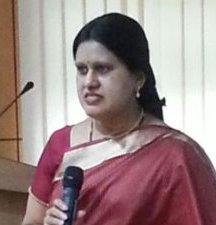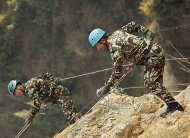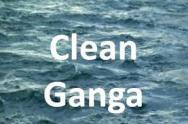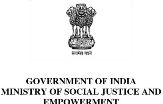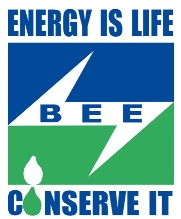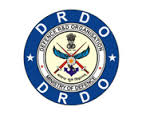Distinguished dignitaries on the dais, organisers of the program, scholars, ladies and gentlemen, It is a privilege to participate in a workshop on a subject of immense importance i.e. Internet Safety. So, standing at this podium, let me make a confession. I am a Wikipedia person. There, now I have said it. A fault of character few people, much less scholars, will admit to.
Therefore , I was eager to know what Wikipedia had to say on the subject. It was a shocker. What a wide variety of dangers lurk in the corners of the World Wide Web! Phishing, internet scams, malware,cyberstalking, cyberbullying, online predators, obscene and offensive content. From your identity to your wallet, everything is in peril of being stolen, distorted, destroyed.
If you move from Wikipedia to Geeknation, you will know how much Hollywood is concerned with the problem. From the helpfully named ‘Identity Theft’ to ‘The Net’, movies warn us that we may just be erased off the face of the virtual world! But this is not a matter for jest. We have moved from an IT enabled world to a Web enabled world. If I can lock my doors and throw open my gates from a remote location, it stands to reason that anyone, with access and knowledge can do the same. The same goes for privacy. We have put ourselves out there, and there is no retreat. Privacy is a thing of the past.
I am a good Indian, so I moved to my next question: I am in so much danger, so what is the government doing about it? I am sure today’s workshop will address this aspect in greater detail. As we know, Sec.66A of the IT Act, 2000 is the ‘saviour law’ , so to speak, which is comprehensive in its wording and can be widely interpreted and applied. The section was included vide amendment of 2008, and deals with offensive messages, besides being an ant-spam law. The scope of Section 66A was widened by the Bombay High Court in the Manoj Oswal vs State of Maharashtra case, where the term ‘send’ was interpreted as equivalent to ‘publish’ or ‘harass’. Besides, Sec.66A is cognizable, so a violator can be arrested without warrant. In addition to 66 A, various provisions of the IPC, the IT Act along with the Indian Contract Act also give protection against the more serious aspects of online fraud, defamation and so on.
So, there are laws to protect us from the more extreme cases of violations of privacy or purse. But about our ordinary everyday lives? We are social animals, and we live in an age of sharing. Both consciously and inadvertently,we reveal a great deal of ourselves on the internet. The www is a metaphorical web too, for it draws and draws us until so much of us is out there. What we don’t ourselves reveal, networks like Facebook have sophisticated mechanisms to ferret out. Just a few days ago, FB was urging me to connect with my hairdresser, though I cannot imagine how they made the connection. A trifle more embarrassing was the experience of a colleague of mine, whose wife of 15 odd years was urged to be “friends” with his girlfriend from college!
I have neither sword nor shield to fend off this aggressive assault on my privacy and safety. But I can and do follow some simple thumb rules for my security, without becoming a Virtual recluse. First, I put myself out there.I share whatever I can within the bounds of legality, modesty and convenience. For example, my views as a scholar, my speeches and research papers, are freely shared. My work as an officer of the government, on the other hand, carries obligations of responsibility, accountability and confidentiality. Here I am more circumspect.
Second, I am not given to frivolity. I do not gush “how cute” every time a baby or a kitten is put up; if my friend’s updated photograph looks good, I say so. If not, I stay silent. This is what I would do in my normal interactions, and I see no reason for any excessive enthusiasm or criticism just because I am not face to face.
Whenever I am unsure, I desist. I am not fully conversant with mobile banking, for instance, so I have deferred it to a day when I am more confident about using it. I welcome all tools of convenience, I only am cautious to Know before I Act.
So , the netizens and fellow dummies gathered here, this is my simple self-prescription. I live my virtual life as I live my real life. Truth is the ultimate protection. I am sure each of you will have your own ways of coping with and managing the internet.
Author: Dr. Kalpana Gopalan is presently Principal Secretary at Food, Civil Supplies, Consumer Affairs & Legal Metrology Department, Government of Karnataka. A Practitioner, policy-maker, scholar, author, volunteer and mother, Kalpana Gopalan wears many hats. A serving IAS officer for 27 years, she has worked in land administration, urban management, rural development and education. She is a NLM-UNESCO awardee for her work in adult literacy and Advisor to the Bruhat Bangalore Mahanagara Palike. A Doctorate and Masters in public policy from IIM Bangalore, she was rated among the “top two percent of Doctoral Candidates in the past decade”for her research on infrastructure PPPs, . A gold medallist and topper in her undergraduate and master’s, she was a Visiting Fellow at McGill and Concordia Universities in Canada, EU fellow in the University of Salerno, Italy, Chevening scholar, IDS, UK and Maxwell Public Policy scholar in Syracuse University, USA.
See more at: https://www.indianbureaucracy.com/what-does-leadership-mean-to-me-straight-from-a-bureaucrat/#sthash.NuL3p2R2.dpuf


